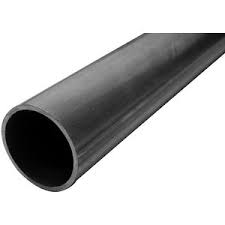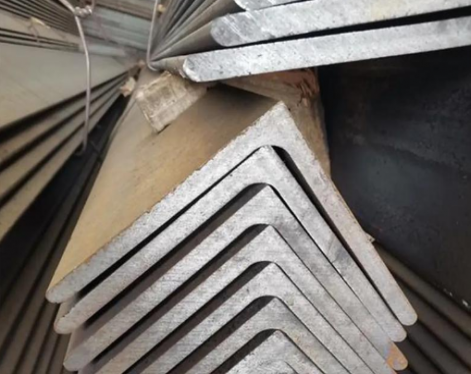Cleaning black steel pipe is important for maintaining its appearance and ensuring its longevity. Black steel pipe is commonly used in various industrial, commercial, and residential applications, and it can accumulate dirt, rust, and other forms of debris over time. In this guide, I will provide comprehensive steps and methods for cleaning black steel pipe to help you maintain its condition and performance.
1.Supplies and Equipment
Before beginning the cleaning process, gather the necessary supplies and equipment:
Protective Gear: Wear gloves, safety goggles, and a dust mask to protect yourself from dirt, dust, and potential chemical exposure during the cleaning process.
Cleaning Solution: Choose a suitable cleaning solution based on the type of contaminants present on the black steel pipe. Common options include mild soap and water, vinegar, commercial metal cleaners, or specialized rust removers.
Brushes and Abrasives: Select appropriate brushes and abrasives for scrubbing and removing debris from the surface of the pipe. Wire brushes, steel wool, nylon bristle brushes, and abrasive pads are often used for this purpose.
Rags and Towels: Prepare clean rags and towels for wiping down the pipe after cleaning and rinsing.
Protective Coating (Optional): If desired, have a protective coating such as oil-based paint or a clear sealant ready to apply after cleaning to prevent future oxidation and rusting.

2.Cleaning Process of black steel pipe
Follow these steps to effectively clean black steel pipe:
Step 1: Safety Precautions
Before starting any cleaning process, ensure that the area is well-ventilated and remove any flammable materials nearby.Put on your protective gear, including gloves, safety goggles, and a dust mask, to safeguard yourself from potential hazards.
Step 2: Inspection
Inspect the black steel pipe for the type and extent of contamination. Identify areas with rust, dirt, grease, or other debris that require cleaning.
Step 3: Surface Preparation
Begin by wiping down the surface of the pipe with a dry cloth or brush to remove loose dirt, dust, and debris. This initial step prepares the surface for more thorough cleaning
Step 4: Cleaning Solution Application
Depending on the type of contaminants present, prepare a suitable cleaning solution. For general dirt and grime, a mixture of mild soap and water can be effective. For rust removal, consider using a commercial rust remover or a solution of equal parts vinegar and water.
Step 5: Scrubbing and Cleaning
Dip a brush or abrasive pad into the cleaning solution and start scrubbing the surface of the black steel pipe. Work in small sections, applying moderate pressure to lift off the contaminants. Use a combination of circular and back-and-forth motions to cover the entire surface.
Step 6: Rinse and Repeat
After thoroughly scrubbing the pipe, rinse off the cleaning solution using clean water. Inspect the cleaned areas and repeat the process if stubborn stains or residues persist.
3.Preventive Measures
In addition to regular cleaning and maintenance, implementing preventive measures can help minimize the frequency and intensity of cleaning black steel pipes. Here are some preventive measures to consider:
(1)Environment Control
Control the environment in which the black steel pipes are installed or stored. Limit exposure to moisture, humidity, and corrosive substances to reduce the likelihood of rust formation.
(2)Sealing and Coating
Apply a protective coating or corrosion-resistant sealant to newly installed black steel pipes before they are put into service. This proactive measure can prolong the lifespan of the pipes and reduce the need for frequent cleaning.
(3)Proper Handling and Storage
When handling and storing black steel pipes, ensure that they are kept off the ground and protected from direct contact with moisture. Store them in a dry, well-ventilated area to prevent oxidation and rusting.
(4)Regular Inspections
Implement a schedule for regular inspections of black steel pipes to identify early signs of rust, corrosion, or contamination. Prompt identification allows for timely intervention and cleaning to prevent further deterioration.
(5)Appropriate Use of Pipe Fittings
Utilize appropriate pipe fittings, such as couplings, elbows, and flanges, to create secure connections and minimize the risk of leaks or exposure to external elements that could contribute to pipe contamination.
By integrating these preventive measures into your maintenance practices, you can proactively protect black steel pipes from deterioration and minimize the effort required for cleaning and restoration.
1.Supplies and Equipment
Before beginning the cleaning process, gather the necessary supplies and equipment:
Protective Gear: Wear gloves, safety goggles, and a dust mask to protect yourself from dirt, dust, and potential chemical exposure during the cleaning process.
Cleaning Solution: Choose a suitable cleaning solution based on the type of contaminants present on the black steel pipe. Common options include mild soap and water, vinegar, commercial metal cleaners, or specialized rust removers.
Brushes and Abrasives: Select appropriate brushes and abrasives for scrubbing and removing debris from the surface of the pipe. Wire brushes, steel wool, nylon bristle brushes, and abrasive pads are often used for this purpose.
Rags and Towels: Prepare clean rags and towels for wiping down the pipe after cleaning and rinsing.
Protective Coating (Optional): If desired, have a protective coating such as oil-based paint or a clear sealant ready to apply after cleaning to prevent future oxidation and rusting.

2.Cleaning Process of black steel pipe
Follow these steps to effectively clean black steel pipe:
Step 1: Safety Precautions
Before starting any cleaning process, ensure that the area is well-ventilated and remove any flammable materials nearby.Put on your protective gear, including gloves, safety goggles, and a dust mask, to safeguard yourself from potential hazards.
Step 2: Inspection
Inspect the black steel pipe for the type and extent of contamination. Identify areas with rust, dirt, grease, or other debris that require cleaning.
Step 3: Surface Preparation
Begin by wiping down the surface of the pipe with a dry cloth or brush to remove loose dirt, dust, and debris. This initial step prepares the surface for more thorough cleaning
Step 4: Cleaning Solution Application
Depending on the type of contaminants present, prepare a suitable cleaning solution. For general dirt and grime, a mixture of mild soap and water can be effective. For rust removal, consider using a commercial rust remover or a solution of equal parts vinegar and water.
Step 5: Scrubbing and Cleaning
Dip a brush or abrasive pad into the cleaning solution and start scrubbing the surface of the black steel pipe. Work in small sections, applying moderate pressure to lift off the contaminants. Use a combination of circular and back-and-forth motions to cover the entire surface.
Step 6: Rinse and Repeat
After thoroughly scrubbing the pipe, rinse off the cleaning solution using clean water. Inspect the cleaned areas and repeat the process if stubborn stains or residues persist.
3.Preventive Measures
In addition to regular cleaning and maintenance, implementing preventive measures can help minimize the frequency and intensity of cleaning black steel pipes. Here are some preventive measures to consider:
(1)Environment Control
Control the environment in which the black steel pipes are installed or stored. Limit exposure to moisture, humidity, and corrosive substances to reduce the likelihood of rust formation.
(2)Sealing and Coating
Apply a protective coating or corrosion-resistant sealant to newly installed black steel pipes before they are put into service. This proactive measure can prolong the lifespan of the pipes and reduce the need for frequent cleaning.
(3)Proper Handling and Storage
When handling and storing black steel pipes, ensure that they are kept off the ground and protected from direct contact with moisture. Store them in a dry, well-ventilated area to prevent oxidation and rusting.
(4)Regular Inspections
Implement a schedule for regular inspections of black steel pipes to identify early signs of rust, corrosion, or contamination. Prompt identification allows for timely intervention and cleaning to prevent further deterioration.
(5)Appropriate Use of Pipe Fittings
Utilize appropriate pipe fittings, such as couplings, elbows, and flanges, to create secure connections and minimize the risk of leaks or exposure to external elements that could contribute to pipe contamination.
By integrating these preventive measures into your maintenance practices, you can proactively protect black steel pipes from deterioration and minimize the effort required for cleaning and restoration.









